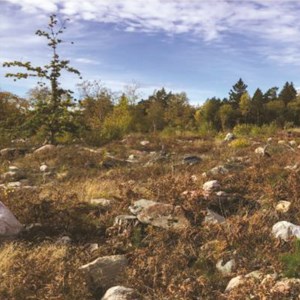Contact
fahri.hasby@slu.se

Clear-cutting forests results in major short- and long-term changes in the ecologically important fungal communities. Both the abundance of fungi and the species composition are affected, which in the long run can lead to lower soil fertility and tree productivity. These are the results of Fahri Hasby's new doctoral dissertation.
Fungi occupy a pivotal role in ecosystems, for example as symbionts of plants or as decomposers in soil.
– Boreal forest, an ecosystem characterized by coniferous trees, is known to act as a global carbon sink and is dominated by ectomycorrhizal symbiosis. In this ecosystem soil carbon and nutrient cycling are largely driven by fungi, says Fahri Hasby.
Human activities, such as forestry, have altered forest ecosystems by fragmenting natural forests, affecting flora and fauna alike. Soil microbes, including fungi, have not escaped the devastating effects.
In his new doctoral thesis, Fahri shows that clear-cutting severely alters soil fungal abundance and species composition in the short term, promoting growth of fungi that feeds on dead leaves and roots and accelerating carbon and nutrient release from soil.
– Clear-cutting eliminates ectomycorrhizal fungi by killing its tree hosts. After reforestation, the ectomycorrhizal fungi return, but the species that make up the fungal community are not the same, Fahri says.
Fahri investigated the fungal communities using various molecular approaches, such as metabarcoding, transcriptomics and metatranscriptomics.
Cortinarius, a key fungal genus with a combination of decomposer and symbiosis capabilities, is largely absent from forest soils that have been subjected to clear-cutting, even several decades after the disturbance. This loss of Cortinarius has major functional consequences, as indicated by reduced activity of genetic pathways involved in decomposition of soil organic matter in replanted forests, compared with forest with long continuity. These findings highlight a risk of impaired nutrient cycling in secondary forests, which may ultimately reduce soil fertility and tree productivity.
– To ensure sustainability and counteract the negative effect of forestry on soil biodiversity and associated functions, alternative ecosystems management, such as higher levels of tree retention or continuous cover forestry, should be considered when evaluating rotational forestry and efforts to mitigate impacts on biodiversity and ecosystem function, concludes Fahri.
fahri.hasby@slu.se
Read the doctoral thesis “Impacts of clear-cutting on soil fungal communities and their activities in boreal forests - A metatranscriptomic approach”
Fahri Hasby defends his thesis on the 28th of February 2022. Read more about the defense here.